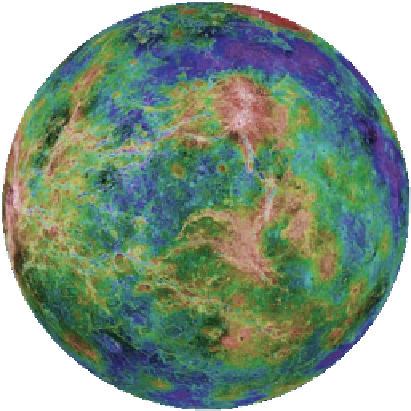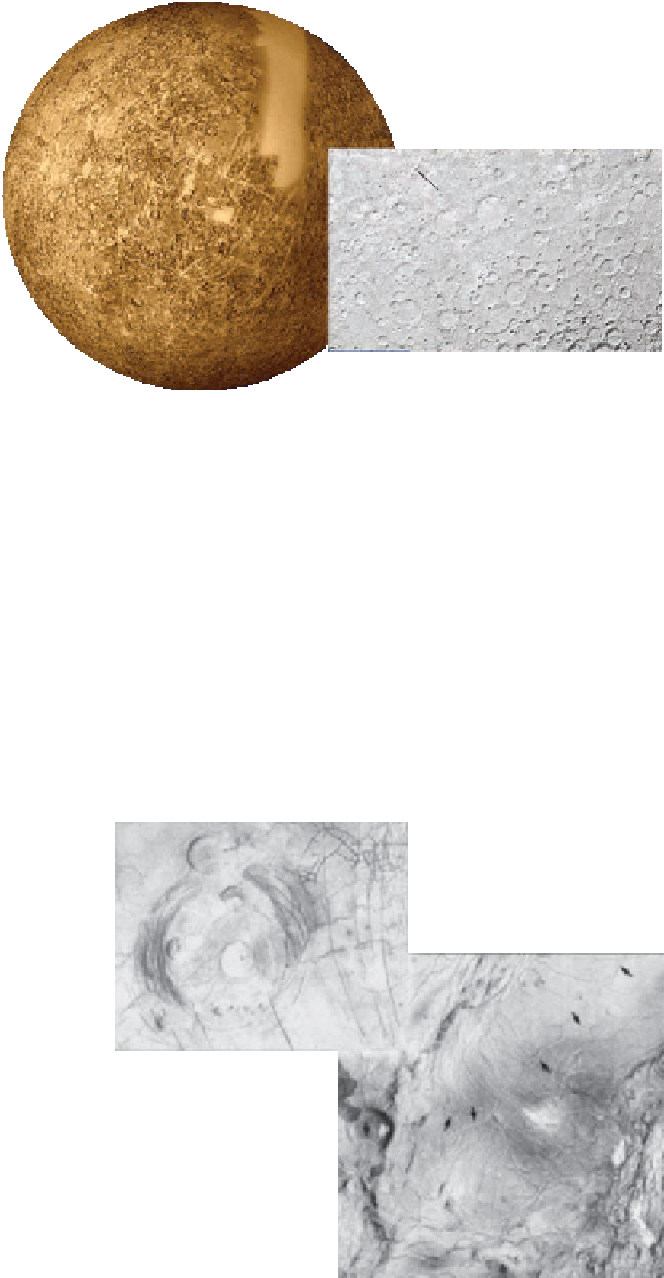Geology Reference
In-Depth Information
Geo-inSight
Tectonics of the Terrestrial Planets
The four inner, or terrestrial, planets—Mercury, Venus,
Earth, and Mars—all had a similar early history involving
accretion, differentiation into a metallic core and silicate
mantle and crust, and formation of an early atmosphere by
outgassing. Their early history was also marked by
widespread volcanism and meteorite impacts, both
of which helped modify their surfaces. Whereas the other
three terrestrial planets as well as some of the Jovian moons
display internal activity, Earth appears to be unique in that its
surface is broken into a series of plates.
1. A color-enhanced photomosaic of
Mercury shows its heavily cratered
surface, which has changed very
little since its early history.
Images of Mercury sent back by
Mariner 10
show a heavily cratered
surface with the largest impact basins
filled with what appear to be lava flows
similar to the lava plains on Earth's Moon.
The lava plains are not deformed, however,
indicating that there has been little or no
tectonic activity.
2. Seven scarps (indicated by
arrows) can clearly be seen in this
image. These scarps might have
formed when Mercury cooled and
contracted early in its history.
JPL/ NASA
Another feature of Mercury's surface is a large number of
scarps, a feature usually associated with earthquake activity. Yet, some
scientists think that these scarps formed when Mercury cooled and contracted.
Of all the planets, Venus
Venus is the most similar in size and mass to Earth, but it
differs in most other respects. Whereas Earth is dominated by plate
tectonics, volcanism seems to have been the dominant force in the
evolution of the Venusian surface. Even though no active volcanism
has been observed on Venus, the various-sized volcanic features and
what appear to be folded mountains indicate a once-active planetary
interior. All of these structures appear to be the products of rising
convection currents of magma pushing up under the crust and then
sinking back into the Venusian interior.
4. Arrows point to a 600-km
segment of Venus's 6800-km
long Baltis Vallis, the longest
known lava flow channel in
our solar system.
3. A color-enhanced photomosaic of
Venus based on radar images
beamed back to Earth by the
Magellan
spacecraft. This image
shows impact craters and volcanic
features characteristic of the planet.
5. Venus's Aine Corona,
about 200 km in diameter,
is ringed by concentric faults, suggesting that it was pushed up
by rising magma. A network of fractures is visible in the upper
right of this image as well as a recent lava flow at the center
of the corona, several volcanic domes in the lower portion of
the image, and a large volcanic pancake dome in the upper
left of the image.
42








Search WWH ::

Custom Search